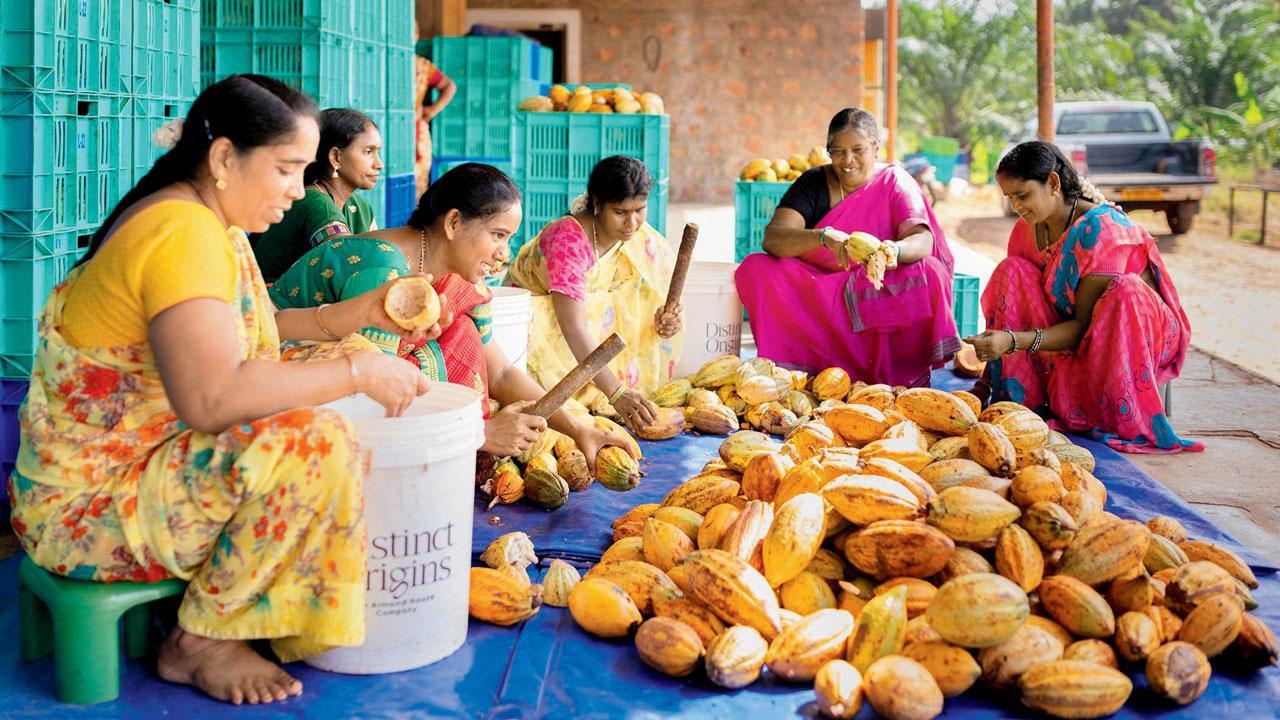Home / Sunday-mid-day / / Article /
Here's how progressive farmers are harvesting cacao at farms in West Godavari
Updated On: 17 August, 2023 01:16 PM IST | Mumbai | Nasrin Modak Siddiqi
On a trip to a cacao farm in West Godavari, Sunday mid day discovers limitless possibilities of the Indian bean

Staff breaks open the pods with wooden cubs to avoid damage to the beans
At 7 am, 62-year-old Boyapati Venkateswara Rao heads to his farm at Tadikalapudi, West Godavari, on his bike. About an hour ahead of Vijaywada, Rao grows coconut, cacao, palm oil, areca nut, bush pepper, agarwood, mango, and jackfruit as the main crop, using organic manure and flood irrigation on 12 acres of land.
“Nature is God’s gift and farming is a beautiful way to appreciate its bounties. Multi-cropping works best for the farm and the farmers, and that is what most people in the region follow,” he tells us humbly, wearing his trademark white shirt and trousers with a red chequered cotton towel over his shoulder. On this sultry morning as we walk on the farm, we meet his eight-year-old grandson Nihal Sai as he plays with an earthworm. A Grade 3 student, he knows more about cacao farming than Google can tell us.



